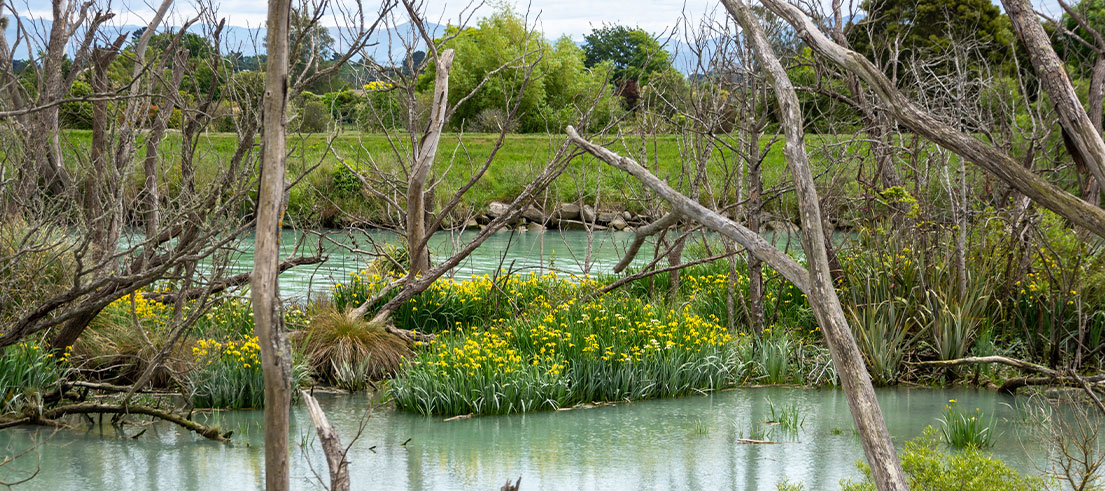
Project protecting native habitat at Kaiapoi
The sweeping wetland surrounding the Kaiapoi River before it meets the Waimakariri is home to īnanga/whitebait and rare, native manu/birds like the matuku-hūrepo/Australasian bittern.
Over the last 15 years, the wetland has been steadily invaded by pest plants that threaten the fish habitat. Now, a project led by us is attempting to set the balance back in favour of the original native plants, protecting the spot many native species call home.
The Kaiapoi site totals 14.3 hectares along the river that will benefit from targeted control of yellow flag iris.
Berm transition project
As part of this project, we are transforming sites on 23 rivers throughout Waitaha/Canterbury. At Kaiapoi, we're using targeted weeding, which means we're leaving native undergrowth untouched and flood protection trees, where necessary, while eliminating yellow flag iris. No planting is needed as native species will flourish with space.
Benefits of this work include protecting īnanga/whitebait spawning grounds, increasing native biodiversity and supporting the area's flood capacity.
The Regionwide Berm Transition Project is part-funded by the Ministry of Business, Innovation and Employment's Kānoa - Regional Economic Development and Investment Unit (64 per cent), with the remainder co-funded by us through a combination of contributions from partners and operational funding and rates.
Tilting the balance back to native biodiversity
At the Kaiapoi site, native wetland and saltmarsh communities grow beneath a canopy of planted and wilding willow trees. Raupō, bullrush, harakeke, juncus, and carex are among the species that inhabit the area, providing sustenance and shelter for īnanga habitat and breeding grounds.
Recently yellow flag iris has quickly spread through the berm habitats, displacing wetland communities. The iris infestation outcompetes native plants, threatening the habitat that īnanga rely on.
Removing iris from the river and wetland will allow the current native species to continue successfully populating, sustaining the environment and life it supports.
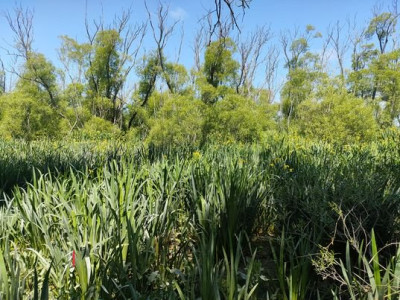
Yellow flag iris before treatment
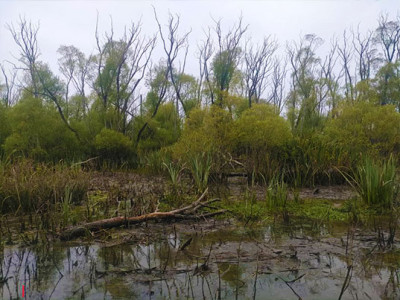
Yellow flag iris after treatment
Yellow flag iris threatens īnanga population
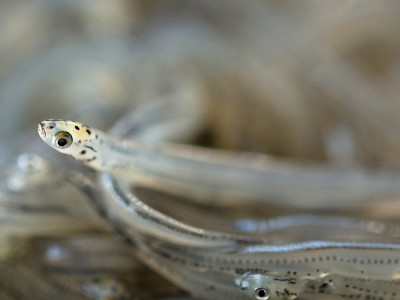
īnanga/Whitebait
Without removal, the saltwater-tolerant weed is likely to outlast the willows, which are slowly dying back with saltwater intrusion or targeted removal, meaning there's increasing light for the iris to "explode" in number.
Braided River Revival Regional Lead, Greg Stanley, stated, "this is a really big problem; with sea level rise, climate change, and saltwater intrusion, the conditions are moving to allow yellow flag iris to become increasingly dominant."
In that scenario, īnanga aren't likely to survive in their current Kaiapoi home.
"Īnanga can't use yellow flag iris for laying eggs. The native plant species all have classic grassroots which form dense raft mats that the īnanga stick their eggs to, whereas the yellow flag iris is like a ginger root," Greg said.
Previous spawning grounds identified at the confluence of the Kaiapoi River and Courtenay Stream have been increasingly choked up by iris intrusion, reducing the spawning ground at this site with little else available.
"They can't move up the channel because there's no grass, only steep-sided banks. Water conditions in other areas aren't accepted by the īnanga so they don't use them," Greg lamented. "There's really nowhere for them to go.
"Long story short, they're experiencing a massive habitat squeeze. We need to push back, try and hold some ground and hold onto a diverse spread of vegetation. If we make sure native plant species remain dominant, then we can still have a diverse wetland."
Challenges of targeting yellow flag iris for eradication
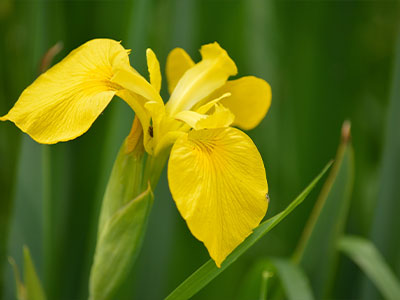
Yellow Flag Iris
The iris is a hardy, opportunistic plant that isn't easily eradicated. Greg explained further, "it's like a ginger root which makes it so successful. If a flood comes and rips it out, pieces break off and every broken piece has the capacity to regrow, establish, and continue its encroachment."
Greg described trying to kill the plant as two steps forward, one step back.
"It's an incredibly difficult thing to work with because you can't just dig it out, if you do that you get four plants, sort of like a Hydra situation - nasty thing!
"The tidiest way to kill it is with a really small amount of a highly successful weed killer. If you just touch a bit on it, it can get right down to the root which is where all the energy is. That's a really difficult job involving the use of waders and handheld knapsacks, so the operation is very targeted and precise."
Weed control operations
To carry out the work at Kaiapoi we contracted expert environmental consultancy Wildland Consultants. Operations began in November 2021 with an excellent rate of treated iris eradication. The project is now in its second season, which began in November 2022 and will control the remaining areas and those areas which may have survived following the initial operation.
